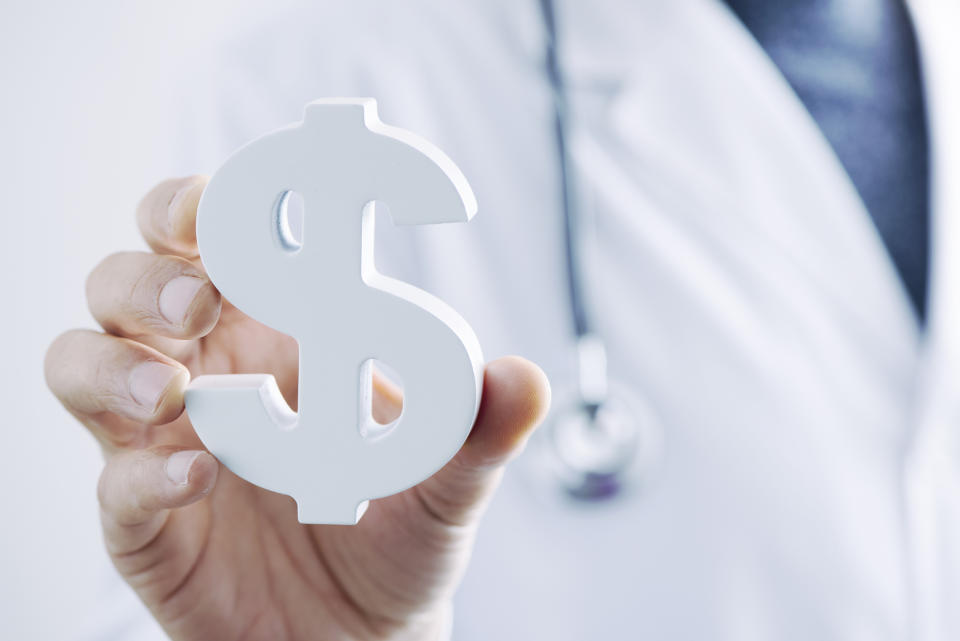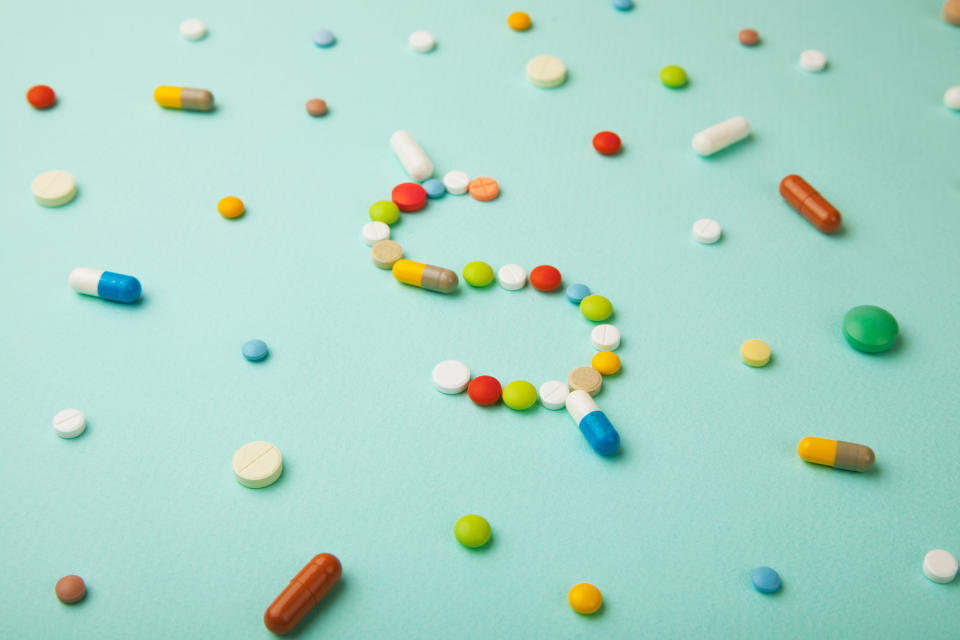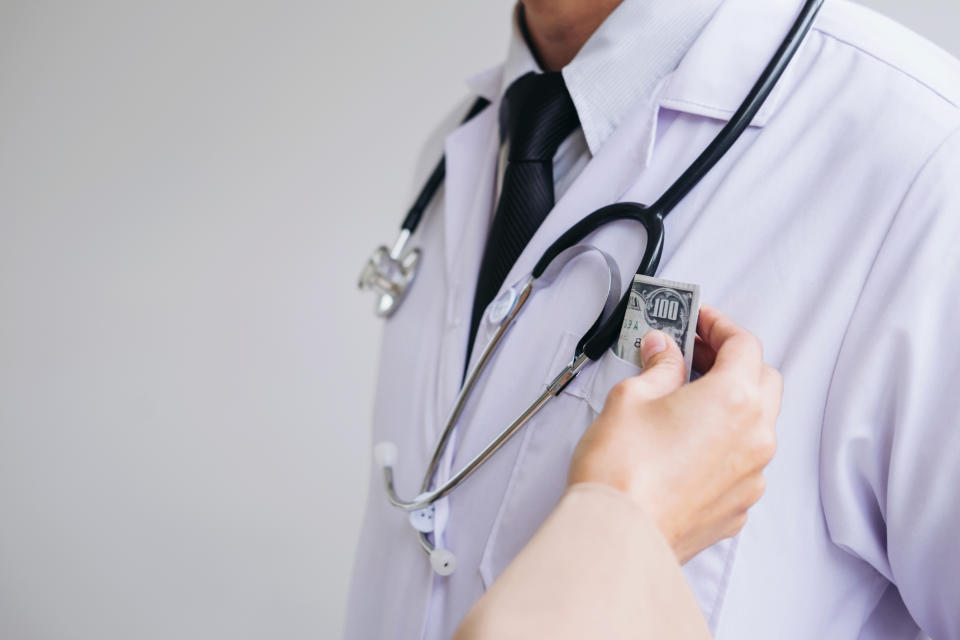3 Big Pharmas Trying to Pop the Rebate Bubble
If you think the science driving the biopharmaceutical industry is wonky, try to follow a drug's paper trail once it leaves the manufacturer. In the U.S., wholesale distributors, retail pharmacies, hospitals, and physician practices are only the beginning. Undisclosed rebates that drugmakers concede to insurers and their intermediaries make following the money a complete mind-bender.
A government proposal in the works could lead to important changes that benefit patients and drugmakers, but the industry isn't going to wait that long. Eli Lilly (NYSE: LLY) recently fired a big arrow at the bulging rebate bubble following signs of success from Amgen (NASDAQ: AMGN) and Gilead Sciences (NASDAQ: GILD). Here's what you need to know about their effort to change the drug pricing landscape.

Image source: Getty Images.
1. Gilead Sciences: Going generic
Last September, Gilead Sciences made heads spin when it started undercutting its own hepatitis C antiviral (HCV) drugs with generic versions. Gilead probably won't lose any money, but the insurers and the pharmacy benefit managers (PBMs) that negotiate on their behalf have a lot to lose. Curing HCV with one of Gilead's drugs cost around $85,000 back in 2014, and lowering the price to compete with new drugs really isn't an option.
Gilead Sciences has to send rebates to PBMs worth more than half the invoiced price on its HCV drugs, or PBMs will remove them from their formulary. Rebates are great for the businesses that receive them, but they rarely work out well for patients. People with high-deductible health plans and most of those on Medicare pay out-of-pocket costs that are linked to list prices, not the amount the insurer actually spends on their treatments.
Gilead's decision to launch generic versions at the same net price it receives from branded versions essentially cuts PBMs out of the picture. Investors probably don't have to worry about any serious loss of revenue if the plan to sell authorized generics doesn't work as expected.
Gilead's HCV franchise sales fell to just $738 million in the fourth quarter of 2018, from $1.5 billion a year earlier. Now that the segment contributes just 13% of total revenue, the company can probably afford to experiment with a new pricing strategy.

Image source: Getty Images.
2. Amgen: Lower prices for lower cholesterol
In October, Amgen made its next-generation cholesterol-reducing drug, Repatha, available for $5,860 per year. That's about 60% less than the medicine's list price.
There are millions of people that for one reason or another can't keep their cholesterol down with statins. Physicians are prescribing Repatha for this group because it reduces their risk of hospitalization down the road, but insurers have been reluctant to pay for the pricey treatment.
When patients can get their insurer to cover Repatha, their out-of-pocket expenses are still set according to its list price, and many with high-deductible plans choose to avoid it. In fact, around 75% of Medicare patients who receive a Repatha prescription never have it filled.
Instead of launching a generic version of Repatha, the company reduced the list price by introducing new national drug codes, and the strategy appears to be working. Repatha sales during the last three months of 2018 were 44% higher than the previous quarter.

Image source: Getty Images.
Eli Lilly: Diabetes battles
In 2013, the average net price Eli Lilly received across its entire product line was 30% less than list prices. In 2017, average discounts reached 51% of list prices, and Lilly's had enough.
Recently, Eli Lilly decided to launch a generic version of its popular Humalog brand of insulin lispro that's priced to compete with a generic version Sanofi (NASDAQ: SNY) launched last April. A five-pack of Sanofi's Admelog quick pens will cost patients $149 out of pocket, although the same pack of pens carries a list price of around $450.
Lilly effectively undercut Sanofi's Admelog with a list price of just $265.20 for a five-pack of generic insulin lispro pens. Eli Lilly hasn't mentioned a patient assistance program, but at such a low list price it probably won't need one.
What's next
One way or another, the bizarre incentives that encourage drugmakers to increase demand by raising prices are going through changes. At the moment, all three of the largest PBMs are part of a larger insurance company. America's largest private insurer, UnitedHealth Group, runs Optum, the third largest PBM. In 2018, the two largest PBMs, CVS Health, and Express Scripts, merged with two large insurers -- Aetna and Cigna, respectively.
Last March, UnitedHealth took advantage of vertical integration to give 7 million of its commercial group benefit members their rebates at the point of sale for their drugs. If the big insurer's peers don't follow suit, a White House proposal could limit PBM revenue options to flat fees that aren't linked to a drug's list price.
Big pharmaceutical companies will still try to charge as much for their drugs as possible. Popping the rebate bubble, though, could slow the pace of those increases. At the very least, it will make it a easier to know where all the money you spend on prescriptions ends up.
More From The Motley Fool
Cory Renauer owns shares of Gilead Sciences. The Motley Fool owns shares of and recommends Gilead Sciences. The Motley Fool recommends Amgen. The Motley Fool has a disclosure policy.
